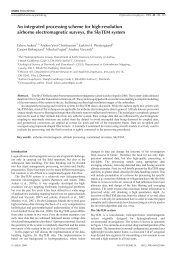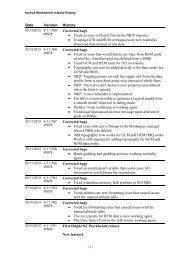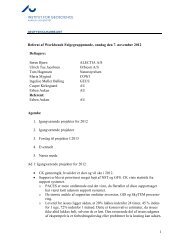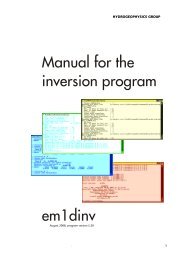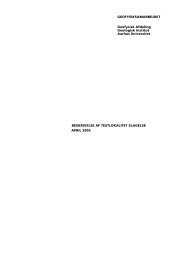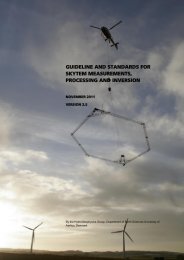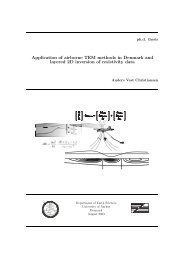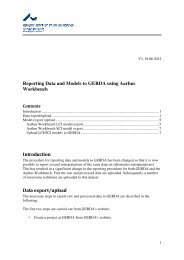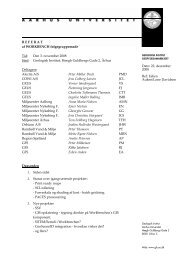Paper
Paper
Paper
You also want an ePaper? Increase the reach of your titles
YUMPU automatically turns print PDFs into web optimized ePapers that Google loves.
E. Auken et al. / Journal of Applied Geophysics 65 (2008) 10–2015Fig. 8. Panel (a) is a profile in the center part of the true model 2. Panel (b) is a section of stitched-together few-layer inversions with the analyses and data residuals plotted below.Panel (c) is the 5-layer LCI-section with the analyses and residuals for lateral constraints and data plotted below. Panel (d) is similar to (c) except that a priori information about theresistivity of the lower high-resistive layer is added to the inversion.In all cases the starting model is a half-space with a uniformresistivity of 50 ohm-m. The layer thicknesses of the starting modelwere logarithmically distributed. Care was taken that no layerboundary in the starting model was equal to a layer boundary in the2D model. Inversions were calculated with four or five layers. The fivelayermodel was only picked for presentation if the data residual forthat model was significantly lower than the residual for the four-layermodel. It has to be emphasised, though, that in all cases the five-layermodel gave similar results as the four-layer model as the inversionalgorithm tends to end up with two consecutive layers with about thesame resistivity if the model has to many layers.The lateral constraints can be applied on thicknesses as well asdepths. Constraints on depths favour horizontal layer boundarieswhereas constraints on thicknesses favour constant thickness inlayers. For this case, we have used lateral constraints on depths.Constraints are relative for both resistivities and depths. We usedreference constraints, C r n , of 1.2 on all the resistivities and 1.1 on alldepths. The reference distance, d r ,is20m,reflecting the soundingdistance for the synthetic examples. This means that models areallowed to vary approximately 20% in resistivities and 10% in depthsover 20 m in average.Fig. 9. In (a) model responses from 1D models at coordinate 2400 m are shown,according to the models plotted in (b).



